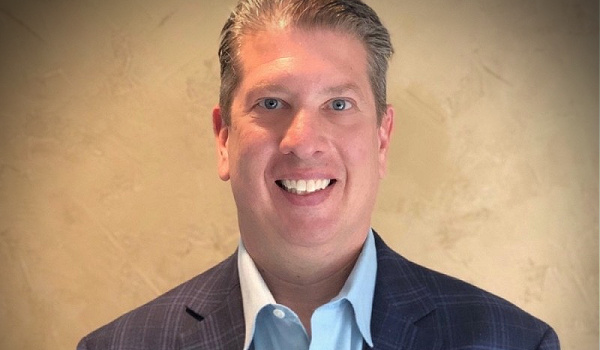Wealth management firms are rapidly moving to implement technology to be able to continue to innovate and to keep up with evolving demands across the entire value chain. But before a business adopts technology transformation, “Leaders should take out those microscopes and then their binoculars and look where they’re going both immediately and further out,” says Michael Partnow, Group President, Wealth Management at JIFFY.ai, an autonomous enterprise platform operating in the wealth management industry.
“In these times of rapid technology evolution, we often tend to jump right into the middle,” Partnow says. “We jump into the part of the story where the prince meets the princess, and then we go straight to ‘happily ever after.’ We need to first focus on ‘once upon a time,’ but that’s overlooked often because we engage so very quickly. Too quickly!”
In the world of automation, haste means moving to adopt technology and reaping the benefits without thinking about all the potential downstream impact.
JIFFY.ai’s low-code no-code platform enables firms to adopt and adapt automation to their processes rapidly. But before businesses start picking the manual tasks they want to replace with technology or the efficiencies they want to target, they need to answer a set of key questions.
“We tend to forget about the critical steps that took place before the prince met the princess, and much before there was a ‘happily ever after’ — because technology has evolved and continues to evolve quickly,” Partnow says. “There’s often a ‘ready, fire, aim’ approach. What are you shooting at? Is it just ‘run, run, run,’? While you were racing down the field, have you ever had the experience where you turned to other’s on the field and asked ‘hey, where are we going again? What are we running towards?”
Step One: Define Success
According to Partnow, before implementing technology, firms need to clearly define success first.
“Is it strictly tied to return-on-investment, i.e., reducing head count? Or are we looking for transformation?” asks Partnow. “Are we looking for quick wins, or are we looking for some sort of clean-up or refresh to make ourselves more attractive in what’s been a conducive time for acquisitions?”
Step Two: Set Expectations
“Next, as opposed to being incredibly tactical, is understanding what we are looking to solve for more broadly – is it return on engagement, refreshing for a sale, the ability to recruit more, true transformation, or do we just want to dust off some things because you have a budget allocation and do not wish to lose it?” Partnow says. “We need to step back and ask ourselves all these critical questions again, otherwise we will face complete misalignment of interests across multiple parties, trying to solve the same problems but defining success very differently.”
He has a pertinent example to showcase this situation. In one of JIFFY.ai’s business relationships, three economic buyers were involved in technology decisions: the CEO, the CFO and the COO/Head of Strategy. The CEO viewed automation as a path to total business transformation. The CFO thought of automation in terms of reduced headcount. The COO considered automation as a means to achieve better operating efficiencies and faster growth.
Until all three sat down around the table with JIFFY.ai’s automation experts, there had been no alignment between their different visions for the firm’s technology transformation.
“This is as much about change management and socialization as it is about technology,” says Partnow. “A lot has to happen before a process is even defined and the team engages in understanding what a potential use case is. We have to understand what is valued and is challenging with each individual across the entire value chain. We must understand how they are communicating changes and who they communicate changes to…”
Which leads us to step three.
Step Three: Communicate Change
Firms need to have a framework in place to communicate change. Even small changes can be seen as disruptive to employees who might have become accustomed to specific processes and responsibilities.
“We need to think about how to mitigate and control the message around any changes we’re making. We need to understand what’s in it that benefits each person so we can communicate that,” says Partnow. “We can imagine the response among employees if suddenly a third party comes into the workplace, saying ‘hello, we’re going to monitor what you do.’”
You might recall that scene from the movie ’Office Space’ when the ‘Bobs’, a pair of consultants, suddenly appear in the protagonist’s office. There is no tempering, or expectation setting, or attempt to show the benefit of the consultants’ prior work to the employees of the company. As a result, the characters in the Office Space respond negatively, even with suspicion, towards the consultants.
“Many organizations bring in consultants for change management or have a full-time employee on staff with defined change management responsibility as part of their senior leadership team. Their mandate is to understand the employees’ values and embed themselves in the organization’s culture to understand all the intangibles impacted by change,” Partnow says. “Oftentimes an organization misses that. It’s an opportunity for ROI and to avoid regrettable attrition, so ignoring the downstream impact makes a lot of sense to them.”
But people generally have good intentions. They just don’t think about how to deploy technology beyond solving for a task or a process. They “jump into the middle” without thinking about messaging—what the messages should be, and to whom the message should be delivered.
Step Four: Build The Team
Only now is a firm ready to build a team to implement automation.
“Engaging the right team early is critical. Until all these key steps are understood, and then a plan is addressed and thoughtfully laid out, we can’t start socializing more broadly to our subject matter experts,” Partnow says. “Often, we tend to talk about these projects before we fully appreciate how they will impact the people on the other side. We need to have in hand the answers to critical questions before we engage with them and before we identify a use case and identify the steps in the process.”
Now you’re ready to bring together stakeholders to drive towards the success that has been defined in the previous steps, ensuring that there is representation across all the relevant touch points—even if change management is being driven by a third party.
The most important person when planning and implementing automation is the one who has been doing the process manually all through, over and over and over and over again.
“There’s no better source of information than that person—the subject matter expert, who has been processing the data themselves every day,” says Partnow. “We must spend time shadowing them and understanding the process in its entirety and down to its minutest details. What is this task they’re going to complete, what is the operation? What connectors are being used and how can we create a better experience? That’s a key step, and it is so often overlooked.”







